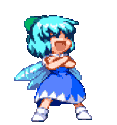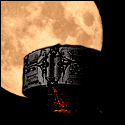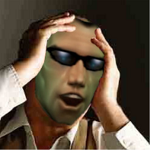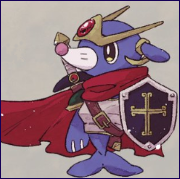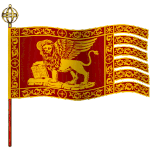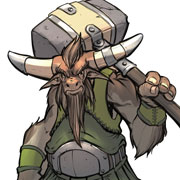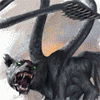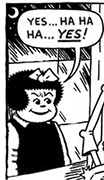|
Tuxedo Catfish posted:How many groups do you think actually played 3.5 with the Bo9S, though?
|
|
|
|

|
| # ? May 9, 2024 15:56 |
|
Tuxedo Catfish posted:How many groups do you think actually played 3.5 with the Bo9S, though? Aside from the camp of people instantly turned off by the ToB for feeling too anime or giving martial classes too many nice things, it was one of the most well-regarded 3.5e books and hugely popular even during the period it was released. Yes, there's an implied asterisk there on "popular" because it was still a mid-late edition supplement, but that's also not your original point? 3e and 4e have way, way more in common than base 2e did with base 3e. The ToB was a recycled draft of a proto-4e before its final incarnation, but it and Star Wars Saga Edition are very direct line between the two editions, to the point that people would suggest it for players used to playing 4e melee classes that switched to 3e.
|
|
|
|
Tome of Battle was one of the few 3.5 books I was able to sell for more than retail. (I think the only other one was Frostburn, but Tome of Magic came close.)
|
|
|
|
The Spell Compendium and Magic Item Compendium got pretty inflated for a while before they had premium reprints, too
|
|
|
|
Oh, yeah, the Spell Compendium did catch a decent price.
|
|
|
|
Nuns with Guns posted:Aside from the camp of people instantly turned off by the ToB for feeling too anime or giving martial classes too many nice things, it was one of the most well-regarded 3.5e books and hugely popular even during the period it was released. Yes, there's an implied asterisk there on "popular" because it was still a mid-late edition supplement, but that's also not your original point? 3e and 4e have way, way more in common than base 2e did with base 3e. The ToB was a recycled draft of a proto-4e before its final incarnation, but it and Star Wars Saga Edition are very direct line between the two editions, to the point that people would suggest it for players used to playing 4e melee classes that switched to 3e. They're two separate points, both in response to the original post about how people remember earlier editions. 4E ditched Vancian spellcasting, which is probably the biggest change in D&D's history. It siloed combat from non-combat mechanics in a way that AD&D and 3E very distinctly do not. It had an encounter design/balancing system that actually meant something. It represented a vast departure in principles from any of the previous editions, which is way more significant than whether it used BAB or THAC0. Tuxedo Catfish fucked around with this message at 01:18 on Nov 25, 2017 |
|
|
|
Tuxedo Catfish posted:They're two separate points, both in response to the original post about how people remember earlier editions.
|
|
|
|
2e -> 3e was the larger change in mechanics, but it obfuscated 99% of it's changes and revived the brand. 3e -> 4e was the larger change in gaming culture because it was far more clear about what it was changing and because 3e may have been dying, but it certainly wasn't dead. 4e -> 5e is the most regressive change because nerds are nerds.
|
|
|
|
Tuxedo Catfish posted:They're two separate points, both in response to the original post about how people remember earlier editions. I mean, did it? In effect it dramatically cut down on spell slots - you could prepare one first level spell, one fifth level spell, etc. Only the wizard would be choosing which spell day by day but like, actual literal Vancian wizards could cast maybe three or four spells before having to go lie down.
|
|
|
|
Tuxedo Catfish posted:4E ditched Vancian spellcasting, which is probably the biggest change in D&D's history. It siloed combat from non-combat mechanics in a way that AD&D and 3E very distinctly do not. It had an encounter design/balancing system that actually meant something. It represented a vast departure in principles from any of the previous editions, which is way more significant than whether it used BAB or THAC0. I think there's a distinction to be made between "3e never attempted to do this" and "both 3e and 4e both tried to do it, but 4e's iteration actually worked" The 4e monster creation system was a reaction to 3e's CR system being unreliable, and 3e's "build monsters as NPCs" system being far too tedious to use. The 4e encounter creation system (1 monster of level x = 1 player of level x) was a reaction to 3e's CR system being unintuitive (1 monster of CR x = 4 players of level x). The 4e Healing Surge system was a reaction to 3e's "adventuring day" being completely overturned by crafting Wands of Cure Light Wounds. The Half-Level Bonus was a reaction to 3e's multiple disparate base bonuses (BAB, saves, skill ranks) producing unintended and unwanted effects (dump skills being useless, multi-classing causing OP saves, touch attacks being necessary for caster attack rolls, AC becoming entirely useless for non-martials) Adopting an AEDU model even for martials was a reaction to 3e's learning that martials having one neat trick that they can spam all day (i.e. Trip) is difficult to balance against, and is only barely more interesting than a normal attack that they can spam all day. I could keep going, but suffice it to say that 3e also tried to do a lot of things that 4e did, and the key difference was that 4e actually succeeded at doing them.
|
|
|
|
The late in life 3.5 books that were clearly test beds for 4e mechanics were universally very good, if not well balanced.
|
|
|
|
I think it's a weird idea to say that 4E kept combat and non-combat mechanics separate because... it didn't any more than 3E or 5E has? Unless you mean Rituals, but that's a weird nit to pick because skills work basically the same in 3/4/5E and 4E also had tons of 'non-combat' feats and power picks, which was actually a problem because they infringed on the combat system and made you choose between combat competency and noncombat competency.
|
|
|
|
Darwinism posted:I think it's a weird idea to say that 4E kept combat and non-combat mechanics separate because... it didn't any more than 3E or 5E has? Unless you mean Rituals, but that's a weird nit to pick because skills work basically the same in 3/4/5E and 4E also had tons of 'non-combat' feats and power picks, which was actually a problem because they infringed on the combat system and made you choose between combat competency and noncombat competency. It has more to do with the fact that in 4e, you couldn't use rituals like you could with spells in 3e, which is to say trivializing an encounter in six seconds with that One Neat Spell That DMs Hate.
|
|
|
|
Well you generally couldn't use spells like that in 3e either, people just didn't pay attention to that because tracking components was annoying and those spells were mixed in with things that took 5 seconds to cast and it was annoying and a pace-killer to check in the middle of a thing.
|
|
|
|
I'm not big on my 3e knowledge, but in 3.5 you definitely could do that with spells. Components were completely pointless, by and large, because a spell component pouch had anything that didn't cost more than a gold (defined by the game as anything without a listed cost) which was the vast majority of all components, including things that really should cost more, like part of your target (Ice Assassin) or even a loving artifact (Apocalypse from the Sky). And the strongest spells had a casting time of less than 1 round anyway or could be cast way in advance, with a few notable exceptions. senrath fucked around with this message at 06:11 on Nov 25, 2017 |
|
|
|
Reading that Green Ronin stuff was like watching someone fall down the stairs in slow motion. Wow. They really should have known better. A powerful self own.
|
|
|
|
Has anyone out there bought stock art from DTRPG to use with something they're creating to sell commercially before? It seems like a really great deal so long as the license on the art allows it, but I wanted to know if there's anything I need to be aware of other than just "buy art that the creator says I can use."
|
|
|
|
I've bought some stuff with the intent of using it for publication. One thing you really need to be aware of is that a lot of image collections hide some really terrible art behind the preview image(s). Also, make sure you read the agreement carefully - some allow for more modification than others, and they'll all want you to credit their work in your product in a very particular way. Honestly, though, there's no secret trap or anything. People have been using stock art off Drive-Thru (and RPGNow before then) for small, indie publications for a long time.
|
|
|
|
Peas and Rice posted:Has anyone out there bought stock art from DTRPG to use with something they're creating to sell commercially before? It seems like a really great deal so long as the license on the art allows it, but I wanted to know if there's anything I need to be aware of other than just "buy art that the creator says I can use." I bought a picture of an ant for use in my little book about giant ants. I think the key thing is that it'll come in the format you want, and if you might want to adjust it, are you allowed to do so?
|
|
|
|
Tuxedo Catfish posted:They're two separate points, both in response to the original post about how people remember earlier editions. I too have never played a version of D&D that literally separated most non-magical abilities into Weapon Proficiencies and Non-Weapon Proficiencies. (And there was a lot more balancing done by Gygax than he wanted people to notice). And no one seems to have pointed out the biggest difference between the 3.X family and all other versions of D&D. In D&D 3.0, 3.5, and Pathfinder, the rules made up a physics model for the world with all monsters supposed to be created using the same rules as PCs, skill points, and the works - and the game included an entire economic model that didn't work but was over the top enough that someone at one point under 3.0 rules literally sat down and calculated the number of chickens in Greyhawks. Meanwhile in oD&D, AD&D, 4e, and now even 5e the rules are player facing. You expect the monsters to do fairly expectable things but no one expects monsters to be built using the same rules as PCs. There isn't a DC to climb a D&D Standard Tree (DC15) - instead there are guidelines for the GM and therefore deliberately more woolly as the guidelines and tools are there to help the GM and not to actually simulate the world. The thing is that no one noticed at the time. People who'd been playing AD&D normally continued to play AD&D using 3.X rules because they didn't really see any difference. The rules still looked similar so they did what they had learned to. Meanwhile people new to 3.X played 3.X using this demented physics engine because that's what the rules told you you were supposed to do. It's just like the biggest change in the history of D&D (the deprecation and then removal of the XP for GP rules) being something that was incredibly easy to miss.
|
|
|
|
Tuxedo Catfish posted:They're two separate points, both in response to the original post about how people remember earlier editions. As others have said, a modified form of Vancian casting was given to most classes in the form of the AEDU power structure. The Essentials classes rolled back a lot of that to mechanics closer to 3e, including adding a full-Vancian wizard. Rituals were the biggest change in mechanics between 3e and 4e, and tended to be the kind of spells you wouldn't cast in combat anyway because the casting times were roughly equivalent to the times needed for rituals. Skill Challenges were formalized rules for something DMs have always done with noncombat scenarios. The encounter design in 4e was designed the way it was because 3e's CR system was a hot mess. Really, every new/modified system in 4e was a direct response to the problems in 3e and an attempt to rebalance the game based on the criticisms of the system that had emerged over time. You can certainly say that 4e is different from 3e in that it had a clear goal in mind of creating a consistent, balanced system (which it fell flat on quite a bit early on) but that's in contrast to 3e.
|
|
|
|
Peas and Rice posted:Has anyone out there bought stock art from DTRPG to use with something they're creating to sell commercially before? It seems like a really great deal so long as the license on the art allows it, but I wanted to know if there's anything I need to be aware of other than just "buy art that the creator says I can use." There's also stock art from sites like ShutterStock and Pond5, which typically cost a bit more but have better quality art, but unless your game is about office workers or something chances are there won't be much for an RPG.
|
|
|
|
For me, the biggest change in 3E was the easy multiclassing, along with the concomitant arrival of feats and prestige classes. OD&D/1E/2E characters were simple and basic - you picked a class and you progressed through the levels, occasionally making some choices. A seventh-level fighter was pretty much the same as any other seventh-level fighter. You could multiclass, but it was a huge pain in the rear end and usually gimped your character, so very few people bothered with it. Characters were, mechanically, rather cookie-cutter - which made it easy for DMs to set difficulty levels, and made it easy to replace dead retired characters (whipping up a new thief took 5 minutes and a handful of die rolls). 3E took this and broke it over its knee, going all-in on character customization. Which meant building a character became one of those yuppie-parent nightmares where you plan all your kids after-school activities years in advance to maximize their chance of getting into a top college. CharOp became an enormously sophisticated sub-game, with level dips and trap feats and all that. It made the game hard to balance (especially as the supplement treadmill filled the rules with hundreds of official PrCs and thousands of feats, creating a nearly infinite number of potential minmax points) and made building and advancing a character a complete chore, and it made balancing adventures a complete nightmare (and made a complete hash of WotC's tentative effort at building a CR system). 4E was, to me, an attempt to rein this in and get back to a more rigid, less crazypants class design - you know, like it was in Gygax's day. The other big change in 3E was the comprehensive magic item creation rules and the creation of a magic item economy, which made things like budgeting for a sack of wands of CLW just a normal ordinary thing. That was completely loving jarring for someone coming out of 1E/2E, where magic items were supposed to be extremely rare, appearing off of random tables, and there were no magic item shops.
|
|
|
|
I agree with you mostly, but you might be missing all the lard that piled up on 2nd edition towards the end, what with the character option books etc. If you had all that poo poo it could take days to make a character just because you had too much to pick from.
|
|
|
|
AD&D 2E was really not that simple, especially later in its life span due to the splatbook flood and gems like Skills and Powers. e:f;b
|
|
|
|
How about some good and cool TradGames news. Magic: the Gathering and Dungeons & Dragons artist Tony DiTerlizzi has an art exhibit in the Norman Rockwell museum. According to my local NPR station its the first ever exhibition of D&D art in a museum. quote:Never Abandon Imagination will showcase over 200 original paintings and drawings, starting from DiTerlizzi’s work in tabletop games, such as Dungeons and Dragons and Magic: The Gathering, to his many imaginative children’s books, in addition to early artwork from his childhood and college years. The exhibition will highlight the artist’s influences and artistic process. Never Abandon Imagination: The Fantastical Art of Tony DiTerlizzi 
|
|
|
|
neonchameleon posted:I too have never played a version of D&D that literally separated most non-magical abilities into Weapon Proficiencies and Non-Weapon Proficiencies. (And there was a lot more balancing done by Gygax than he wanted people to notice). I've played plenty of 2E. I'm talking about the incredibly blurry line between spells that do things to the environment and clearly defined combat powers. FMguru posted:3E took this and broke it over its knee, going all-in on character customization. Which meant building a character became one of those yuppie-parent nightmares where you plan all your kids after-school activities years in advance to maximize their chance of getting into a top college. CharOp became an enormously sophisticated sub-game, with level dips and trap feats and all that. It made the game hard to balance (especially as the supplement treadmill filled the rules with hundreds of official PrCs and thousands of feats, creating a nearly infinite number of potential minmax points) and made building and advancing a character a complete chore, and it made balancing adventures a complete nightmare (and made a complete hash of WotC's tentative effort at building a CR system). This is a fair point, though. The way you engaged with character creation is definitely a huge change and it's one that links 3E and 4E more than any other two versions. (Well, and maybe 5E, I haven't touched it.) Tuxedo Catfish fucked around with this message at 19:57 on Nov 25, 2017 |
|
|
|
So while both 3e and 4e are major breaks from what had come before, and 3e to 4e isn't as big a gap as grogs proclaim... I must say that 3e is more similar to 1e/2e than 4e is. And that might be the real sticking point.
|
|
|
|
The sticking point is that wizards aren’t powerful enough relative to fighters.
|
|
|
|
Ferrinus posted:The sticking point is that wizards aren’t powerful enough relative to fighters. At least it was true until Mearls got a hold of them.
|
|
|
|
2E AD&D definitely wasn't simple, fast character generation unless you were doing something like a level 1 Fighter using only PHB and even then could easily bog newer players down with stuff like buying equipment and such. And late 2E was a clusterfuck of campaign books, race books, class books, Player's Options, etc that it almost rivals 3E for complex chargen options.
|
|
|
|
I've always thought that if Basic D&D had gotten a 2nd, 3rd, and then a 4th edition, it might have looked a lot like the 4e we actually got.
|
|
|
|
The only * Option book we used was High Level Campaigns, because we were a bunch of fuckin' munchkins and even we thought the Player's Option books were hot garbage. Not that HLC was really much better, especially with one of the writers going off on screeds about how if you didn't use all the rules, you weren't playing D&D.
|
|
|
|
It just struck me that 5e is pathologically afraid of taking risks, or even putting enough trust in players to realize that you don't need to use every single book. 3.5 had a lot of books late in it's life that were obviously not thoroughly playtested, or balanced against vanilla options. But people didn't really get mad at them. They got mad at the Book of Weaboo Fitin Magik because it made Wizards less powerful but WOTC rightly ignored them. The books after Essentials started at least had some interesting class options flavor-wise if nothing else (Feywild and Elemental chaos moreso than Shadow) But so far everything player facing in 5e is covered in so many disclamers and "HEY DMs DON'T ACTUALLY LET YOUR PLAYERS USE THIS STUFF" it's just sad. I know it's because they've drunk the grog-aid and now any change for any reason is bad and "Needing patch notes for our books" is terrible but 3.5 had eratta too, I'm pretty sure that 2nd edition and so forth would have it as well if it doesn't actually have it in some form. But in 5th edition raising a point that something doesn't even make sense from a basic math or logic perspective is apparently verboten because it's optional material and DM's don't need to include it.
|
|
|
|
The reprints of second edition, with the black covers, had errata written in. Hell the original white box had an errata sheet included with printings after the first and also had it written into the later printings. Errata is almost as old as the game.
|
|
|
|
Nuns with Guns posted:Skill Challenges were formalized rules for something DMs have always done with noncombat scenarios. One flaw of 4e's writing that I've come to notice is that they really pushed hard for the skill challenge system, to the point where the idea of doing a simple "one-roll/one-check" resolution hardly ever comes up in written adventures. Everything is an "encounter", and if it's not a combat encounter, then it's a "skill challenge" encounter requiring multiple checks.
|
|
|
|
I cant stress enough that 4e's adventures are hot garbage and the worst part of the game. That first one I'm blanking on and am too tired to bother looking up did actual damage to 4e's rep early in the edition's cycle
|
|
|
|
Lightning Lord posted:I cant stress enough that 4e's adventures are hot garbage and the worst part of the game. That first one I'm blanking on and am too tired to bother looking up did actual damage to 4e's rep early in the edition's cycle Keep on the Shadowfell, which I believe was a Mike Meals creation. Later adventures like Madness at Gardmore Abbey were supposed to be good but yeah, bad early adventures were doubtlessly a sticking point with some people.
|
|
|
|
Lightning Lord posted:I cant stress enough that 4e's adventures are hot garbage and the worst part of the game. That first one I'm blanking on and am too tired to bother looking up did actual damage to 4e's rep early in the edition's cycle Was it Keep on the Shadowfell? Because I ran that and it's Not Great.
|
|
|
|

|
| # ? May 9, 2024 15:56 |
|
Lightning Lord posted:I cant stress enough that 4e's adventures are hot garbage and the worst part of the game. That first one I'm blanking on and am too tired to bother looking up did actual damage to 4e's rep early in the edition's cycle Oh god this is true. Keep on the Shadowfell was trash. That whole line was trash. The Scales of War adventure path in Dungeon was better, and Madness at Gardmore Abbey has a good reputation but I was done with even trying packaged adventures at the point it came out. The early adventure modules are your first chance to really demonstrate why your game is a Good Game, you have to nail it.
|
|
|









